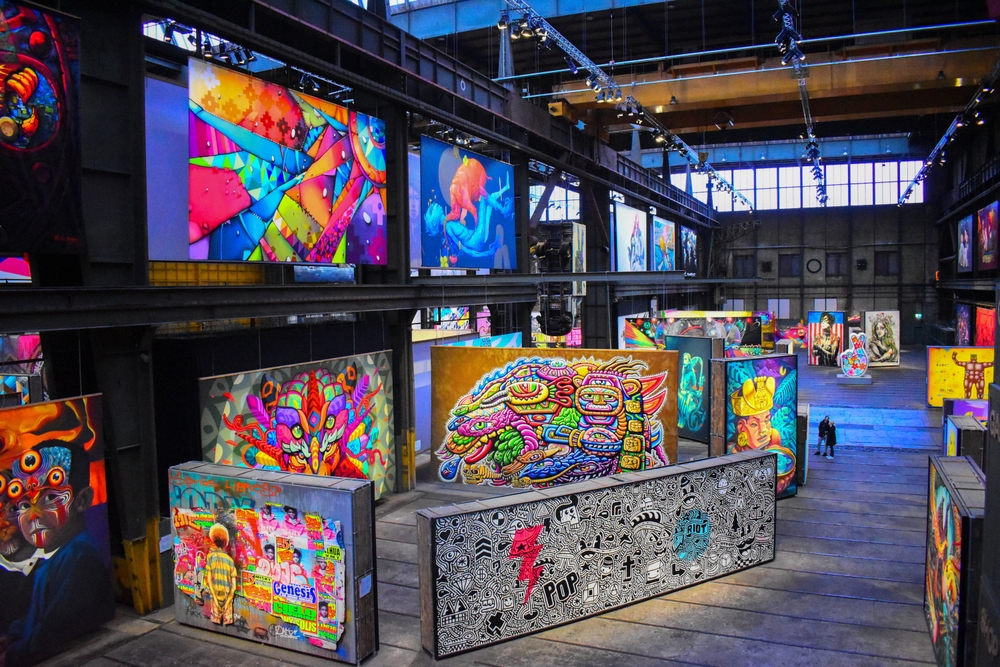The Resurgence of Neo-Expressionism in Contemporary Art
In the ever-evolving landscape of contemporary art, a powerful resurgence of Neo-Expressionism has captured the attention of critics, collectors, and enthusiasts alike. This revival of the emotionally charged, visceral style that dominated the art world in the 1980s is now finding new life through a fresh generation of artists. These modern practitioners are reinterpreting the movement's core tenets, infusing them with current social commentary and innovative techniques. As galleries and museums increasingly showcase these works, Neo-Expressionism is once again at the forefront of artistic discourse, challenging viewers and redefining the boundaries of contemporary expression.

A New Wave of Neo-Expressionist Artists
Today, a diverse group of artists is breathing new life into Neo-Expressionism. Names like Adrian Ghenie, Cecily Brown, and Dana Schutz are leading this resurgence, each bringing their unique perspective to the style. These contemporary Neo-Expressionists are not simply mimicking their predecessors but are instead pushing the boundaries of the movement, incorporating digital techniques, addressing current social issues, and experimenting with new materials.
The Role of Technology in Modern Neo-Expressionism
While traditional Neo-Expressionism relied heavily on physical, gestural painting techniques, today’s artists are incorporating digital tools into their practice. Some are using virtual reality to create immersive, three-dimensional Neo-Expressionist environments, while others are employing AI-generated imagery as a starting point for their compositions. This fusion of technology and raw expressionism is creating a unique visual language that speaks to our digital age while maintaining the emotional intensity characteristic of the movement.
Neo-Expressionism as Social Commentary
Contemporary Neo-Expressionist works often serve as powerful vehicles for social and political commentary. Artists are using the style’s inherent emotional charge to address issues such as climate change, racial inequality, and the impact of social media on society. The large scale and visceral nature of these works make them particularly effective in conveying urgent messages and provoking thought and discussion among viewers.
The Market Response to Neo-Expressionist Revival
The art market has responded enthusiastically to this Neo-Expressionist revival. Major auction houses are seeing record-breaking sales for both established and emerging artists working in this style. Galleries worldwide are dedicating more space to Neo-Expressionist exhibitions, and museums are re-evaluating their collections to showcase works from both the original movement and its contemporary incarnation. This renewed interest has sparked debates about the cyclical nature of art trends and the enduring appeal of emotionally charged, figurative work.
Critical Reception and Artistic Discourse
The resurgence of Neo-Expressionism has not been without its critics. Some argue that the movement’s revival is merely a nostalgic trend, lacking the revolutionary impact of its 1980s predecessor. Others praise it as a necessary return to emotionally resonant art in an era dominated by conceptual and digital works. This debate has reinvigorated artistic discourse, prompting discussions about the role of emotion in contemporary art and the balance between tradition and innovation.
Neo-Expressionism in the Global Art Scene
While Neo-Expressionism has traditionally been associated with Western art centers like New York and Berlin, its contemporary revival is a truly global phenomenon. Artists from Africa, Asia, and South America are bringing their cultural perspectives to the movement, resulting in a rich tapestry of diverse voices and visual languages. This global expansion is challenging the Eurocentric narrative of art history and opening up new avenues for cross-cultural artistic dialogue.
The Future of Neo-Expressionism
As Neo-Expressionism continues to evolve in the 21st century, it faces both challenges and opportunities. The movement must navigate the balance between honoring its historical roots and remaining relevant in a rapidly changing world. Some artists are experimenting with sustainable materials and practices, addressing the environmental concerns that are increasingly central to contemporary art. Others are exploring the intersection of Neo-Expressionism with other art forms, such as performance and installation art, creating hybrid works that defy easy categorization.
In conclusion, the resurgence of Neo-Expressionism represents more than just a cyclical return to a past style. It is a dynamic reimagining of a powerful artistic language, adapted for the complexities of our current era. As artists continue to push the boundaries of what Neo-Expressionism can be, they are ensuring its place as a vital and evolving force in the contemporary art world. This revival serves as a reminder of the enduring power of emotional, gestural art to move, provoke, and inspire in an age often dominated by the digital and the conceptual.





